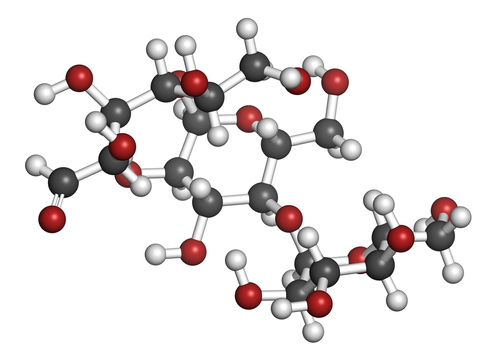Is Maltodextrin Bad For You?
Short answer
Maltodextrin will give you energy in the form of a quick and dramatic blood sugar spike. It’s generally safe, although you may want to avoid it if you’re watching your weight or have diabetes.
More harmful than beneficial. Side effects are common, especially when consumed/done excessively. Moderation is very important.
View Full Grading System
Category 'A'
Very healthy and numerous health benefits. Side effects are rare. Things rated an 'A+' are typically necessary for survival (for example, water).
Very healthy and numerous health benefits. A few harmful qualities may be associated, but only under certain circumstances such as an allergic reaction.
Very healthy and numerous health benefits. Harmful qualities may be associated, but aren't usually serious.
It is important to note that even the best things in life can become bad in immoderate amounts. So, although something may be rated an 'A+', overconsumption/overdoing can bring unwanted effects.
Category 'B'
Very beneficial to your health. Things rated a 'B+' may have a few harmful qualities to pay attention to.
Overall beneficial to your health. Things rated a 'B' may have some harmful qualities to pay attention to.
More beneficial to your health than not. However, harmful qualities are most likely associated and shouldn't be overlooked.
The main difference between category 'A' and category 'B' is the harmful qualities typically present in 'B' items. Serious side effects are usually uncommon, but are still possible and should be taken note of.
Category 'C'
Both beneficial and harmful qualities associated. Things rated a 'C+' are typically a bit more on the beneficial side. Still, moderation is important.
A fairly even ratio of beneficial and harmful qualities. Moderation is important. Very general topics that can lean towards both sides of the spectrum will be placed here as well. Rice, for example, can be good or bad depending on the type.
More harmful than beneficial. Side effects are common, especially when consumed/done excessively. Moderation is very important.
Category 'C' usually denotes to both good and bad qualities. When it comes to this category, it is important to keep this word in mind: moderation.
Category 'D'
Harmful to your health. Although benefits may be associated, the bad most likely outweighs the good. Moderation is very important.
Harmful to your health. A few benefits may be associated, but the bad outweighs the good. Moderation is extremely important.
Harmful to your health. Very few, if any, benefits are present. Things in this category should be avoided as much as possible.
Category 'D' is typically for things that are more harmful than beneficial. While consuming/doing something unhealthy once in a blue moon shouldn't hurt, we definitely recommend eliminating 'D' items as a regular part of your routine/diet.
Category 'F'
Category 'F' is for things that fail to bring anything beneficial to the table, and are very harmful to your health. We recommend completely avoiding anything in this category. Long-term side effects of 'F' items are usually very serious.
Category 'N'
'N' stands for neutral. Things placed into this category are generally (a) neither good nor bad for you, or (b) lack the necessary evidence to reach any conclusions.
Long answer
Maltodextrin is a carbohydrate powder made from rice, potatoes, corn or wheat. It's quickly digested and rapidly introduces sugar into the bloodstream. Athletes use it as a supplement post-workout. It also shows up as a filler and preservative in a wide variety of foods.
The amount of calories per gram in maltodextrin is similar to that of table sugar. Maltodextrin is much easier to digest, however, and eating it causes levels of sugar in the blood to spike much faster. This blood sugar spike can lead to a subsequent crash. It's also more sugar at once than your body can generally use; the excess blood sugar is converted into fat for storage. If you're watching your weight, you may want to avoid maltodextrin for this purpose.
Repeated blood sugar spikes can lead to insulin resistance or diabetes in some individuals. Be sparing with your maltodextrin consumption if you're predisposed to diabetes. If you have diabetes, you’re probably keeping a close watch on your blood sugar already. Consult with your doctor before consuming products containing maltodextrin.
One study published in the journal PLOS ONE found that consuming maltodextrin can mess up the bacteria found in the gut. Maltodextrin disrupted the growth of probiotic bacteria - those important to intestinal health - and increased the risk of health problems from bad bacteria like e. coli. Check in with your doctor if you consume maltodextrin and experience intestinal pain, gas, bloating, or constipation.
Although maltodextrin is sometimes derived from wheat, the manufacturing process separates maltodextrin from the gluten in wheat. You can safely consume maltodextrin if you have celiac disease or are on a gluten-free diet.
Maltodextrin is often used in products that have artificial sweeteners and other processed ingredients. Although the maltodextrin itself is generally safe, processed and artificially sweetened foods are generally unhealthy and can cause a range of long-term health problems. Be sure to read the ingredients on the back of any product that has maltodextrin and use best judgement and moderation in consumption. It’s also possible that the corn, rice, and potatoes used in maltodextrin production are genetically modified.
Possible short-term side effects
- blood sugar spike followed by a crash
Possible long-term side effects
- weight gain
-
diabetes
-
insulin resistance
-
disruption of gut bacteria
Commonly found in
- pudding and gelatins
-
salad dressings
-
canned fruits
-
various desserts
-
powdered drinks
lotion
-
hair care products
-
post-workout supplements
Benefits
Please turn your Ad Blocker off to see this content. Thank you!
Thank you for your feedback!
Written by Sean McNulty
Published on: 09-24-2016
Last updated: 12-10-2016
Thank you for your feedback!
Written by Sean McNulty
Published on: 09-24-2016
Last updated: 12-10-2016


 Approved by
Approved by 














